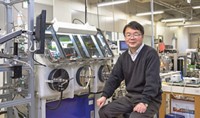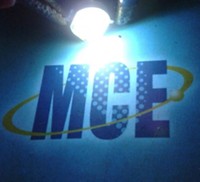Advertisement
Grab your lab coat. Let's get started
Welcome!
Welcome!
Create an account below to get 6 C&EN articles per month, receive newsletters and more - all free.
It seems this is your first time logging in online. Please enter the following information to continue.
As an ACS member you automatically get access to this site. All we need is few more details to create your reading experience.
Not you? Sign in with a different account.
Not you? Sign in with a different account.
ERROR 1
ERROR 1
ERROR 2
ERROR 2
ERROR 2
ERROR 2
ERROR 2
Password and Confirm password must match.
If you have an ACS member number, please enter it here so we can link this account to your membership. (optional)
ERROR 2
ACS values your privacy. By submitting your information, you are gaining access to C&EN and subscribing to our weekly newsletter. We use the information you provide to make your reading experience better, and we will never sell your data to third party members.
Environment
New Route To Adipic Acid Avoids Nitrous Oxide Production
Synthesis: Process provides another option for making nylon precursor without production of potent greenhouse gas
by Stephen K. Ritter
December 18, 2014
| A version of this story appeared in
Volume 92, Issue 51
A new route to adipic acid that uses ozone and ultraviolet light to eliminate the problematic nitrous oxide by-product has researchers intrigued. But once again, issues of scale-up and safety with a greener route to this chemical intermediate—used to make nylon, polyurethane, and plasticizers—temper the good news.
Right now, 95% of the world’s adipic acid production uses nitric acid as an oxidant, which releases N2O as a by-product. The gas eats away at Earth’s protective ozone layer and ranks behind only carbon dioxide and methane when it comes to greenhouse gas emissions. Some producers trap and destroy N2O, and emissions have been cut in half since 1990. But significant emissions remain.
Chemists have been exploring N2O-free routes to adipic acid for years by using O2 or H2O2 or employing enzymes. These methods tend to be more energy efficient, have better yields, and avoid corrosion problems from using nitric acid, but none has yet proven to be economical on a large scale.
Kuo Chu Hwang and Arunachalam Sagadevan of Taiwan’s National Tsing Hua University have developed an approach that uses ozone and UV light at room temperature and pressure (Science 2014, DOI: 10.1126/science.1259684).
Ozone and UV light may be more economical than other routes. But using them as “reagents” is potentially problematic from a commodity-scale perspective, says Thomas Boussie, cofounder of Rennovia. His company is developing a commercial process to make N2O-free adipic acid from glucose using an O2 (air) oxidation process coupled with a hydrogenation step.
Using ozone in organic oxidations can potentially form explosive organic peroxides, Boussie notes. Technical issues of efficient light penetration into large reactors also raise a red flag, he adds. “This paper reports an intriguing laboratory synthetic method,” Boussie says, “but it is one that would encounter significant hurdles scaling to an industrial process.”
Hwang doesn’t view those challenges as insurmountable. Any organic peroxides formed are short-lived, he says, and the engineering of photochemical reactors is improving with LED lighting. “We are optimistic,” Hwang says.






Join the conversation
Contact the reporter
Submit a Letter to the Editor for publication
Engage with us on Twitter